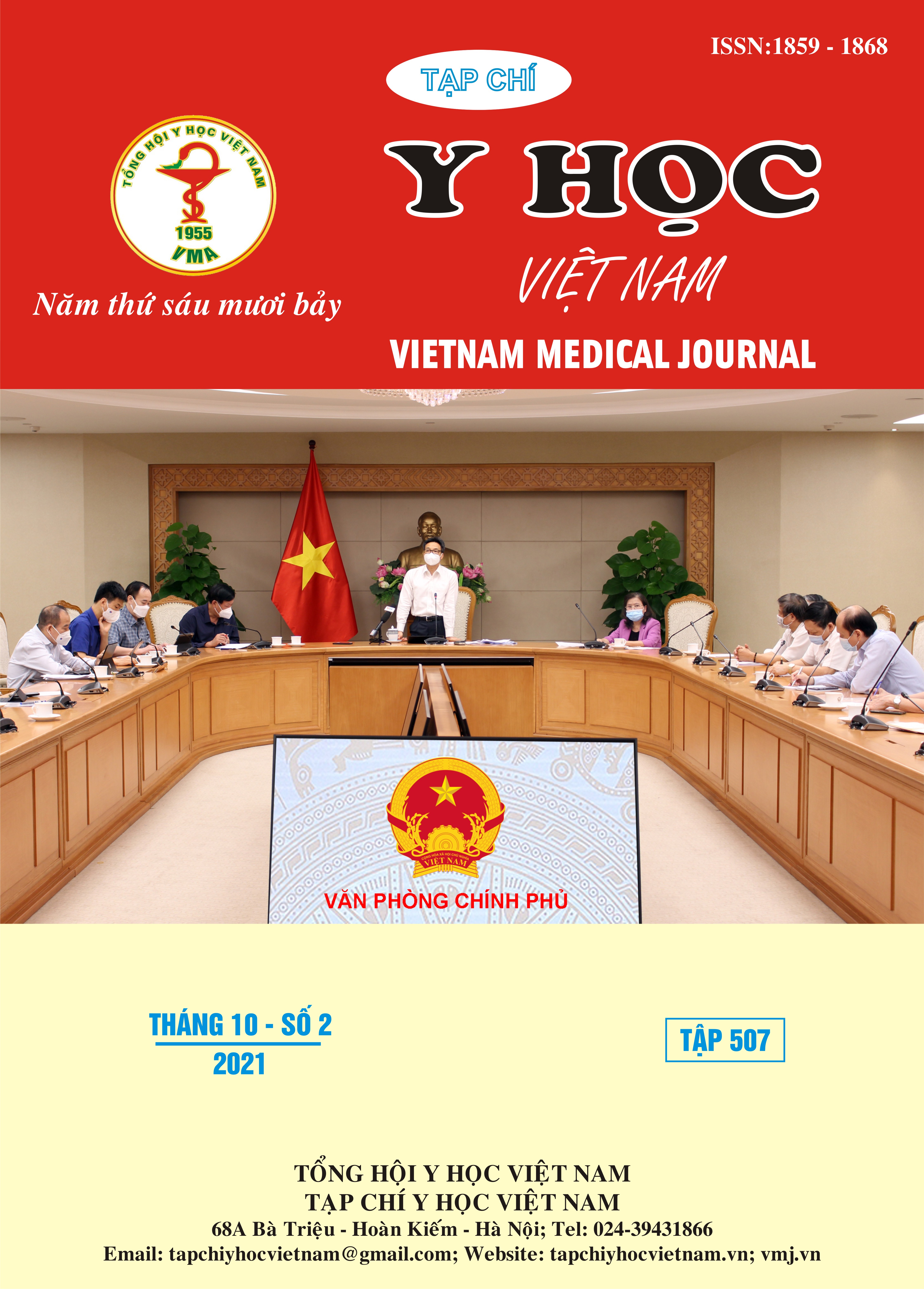NUTRITIONAL STATUS IN 6 MONTH TO 5 YEAR OLD CHILDREN AT THE NUTRITION CLINICS OF THE CHILDREN’S NATIONAL HOSPITAL
Main Article Content
Abstract
Background: Nutrition plays an important role in the growth and development of a child, especially under 5 years old. Objectives: This study aimed to assess the nutritional status and associating factors of children aged from 6 months to 5 years old who visited the Nutrition Clinics at the Children’s National Hospital. Methods: In this cross-sectional study, the nutirtional history and anthropometrics of 234 children aged from 6 months to 5 years old who visited the Nutrition Clinics at the Children’s National Hospital from 9/2020 to 6/2021 were taken and interpreted based on the World Health Organisation (WHO) 2006 growth reference data. Results: 56,0% of subjects were breast-fed within an hour of life. 67,0% were fed entirely on breast milk for the first 6 months and 58,8% for the first 18 months. Complementary feeding was introduced at 6 months of age in 87,0% and 67,9% were provided with all food groups. While the number of meal per day was sufficient in 77,8%, the meal quantity was adequate in only 41,9%. This study observed that 25,6%, 22,7% and 18,4% of the children were stunted, underweight, and wasted respectively. The incidence of overweight and obese was 6,8%. Children with low birth weight (under 2500 g) were more likely to have lower weight later on in life. Conclusion: Childhood malnutrition is still a prevalent challenge among children under 5 years old. Birth weight is associated with the nutritional status.
Article Details
Keywords
malnutrition, nutritional status, children
References
2. Chu Thị Phương Mai, Nguyễn Thị Việt Hà (2014). Đánh giá tình trạng suy dinh dưỡng và một số yếu tố ảnh hưởng đến dinh dưỡng của trẻ từ 6-24 tháng tuổi tại Phòng khám Dinh dưỡng, Bệnh viện Nhi Trung ương. Tạp chí Nhi khoa.
3. Phạm Văn Hoan, Nguyễn Lan Phương và cộng sự (2009). Thực trạng suy dinh dưỡng trẻ em dưới 5 tuổi, kiến thức thực hành nuôi con của bà mẹ ở Xã Phù Linh, Sóc Sơn, Hà Nội 2008. Tạp chí DD&TP, 5 (2).
4. Organization WH. UNICEF/WHO/The World Bank Group joint child malnutrition estimates: levels and trends in child malnutrition: key findings of the 2020 edition. 2020.
5. Brabin BJ, Premji Z, Verhoeff F. An analysis of anemia and child mortality. The Journal of nutrition. 2001;131(2):636S-648S.
6. Kátia B.R.S, Jullyana F.R.A, and all (2010). Association between malnutrition in children living in favelas, maternal nutritional status, and environmental factors. Journal de Pediatria, 86(3), 215-220.
7. WHO, UNICEF, USAID, AED, UCDAVIS and IFPRI (2008), Indicators for assessing infant and young child feeding practices, Consensus meeting, Washington, DC, pp. 5-11.


